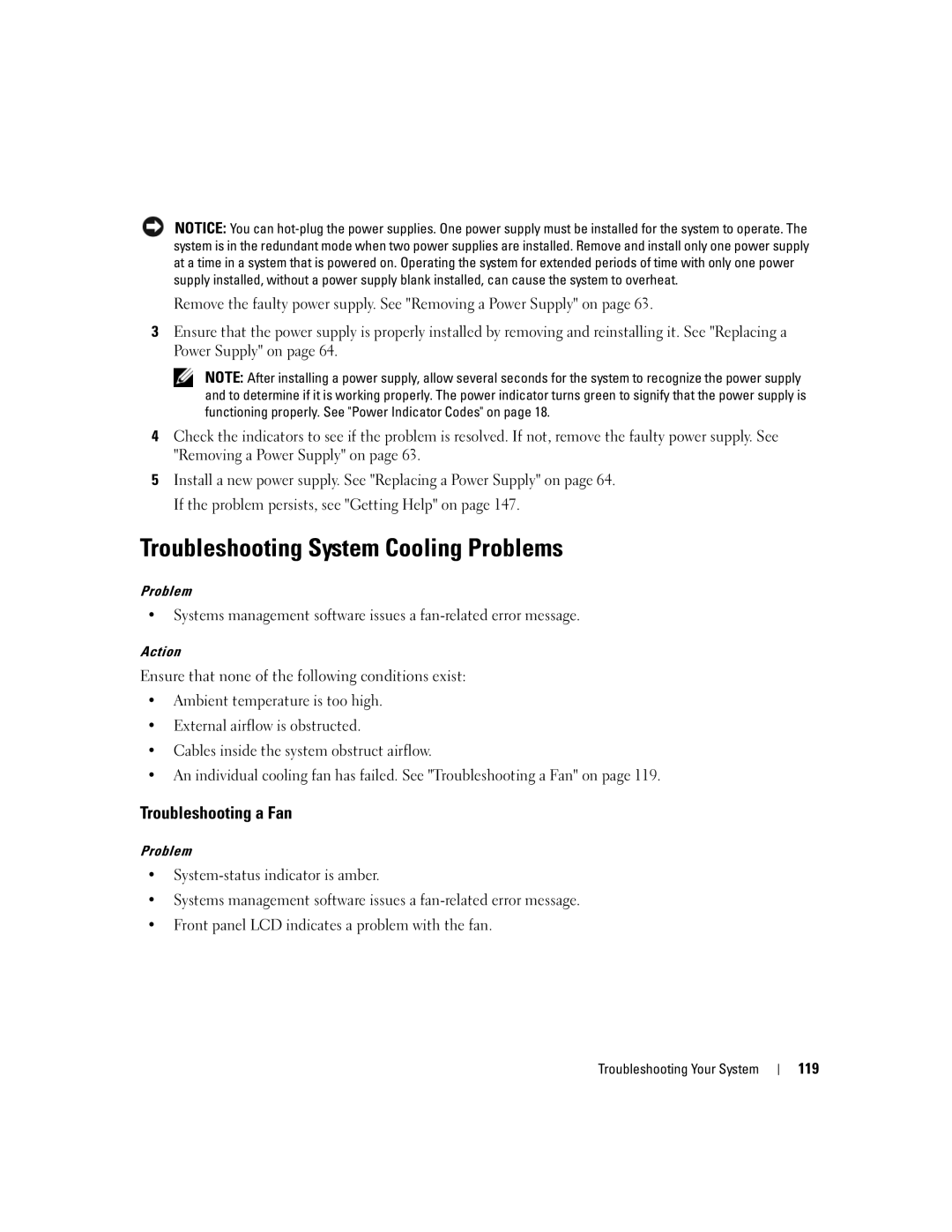
NOTICE: You can
Remove the faulty power supply. See "Removing a Power Supply" on page 63.
3Ensure that the power supply is properly installed by removing and reinstalling it. See "Replacing a Power Supply" on page 64.
NOTE: After installing a power supply, allow several seconds for the system to recognize the power supply and to determine if it is working properly. The power indicator turns green to signify that the power supply is functioning properly. See "Power Indicator Codes" on page 18.
4Check the indicators to see if the problem is resolved. If not, remove the faulty power supply. See "Removing a Power Supply" on page 63.
5Install a new power supply. See "Replacing a Power Supply" on page 64. If the problem persists, see "Getting Help" on page 147.
Troubleshooting System Cooling Problems
Problem
•Systems management software issues a
Action
Ensure that none of the following conditions exist:
•Ambient temperature is too high.
•External airflow is obstructed.
•Cables inside the system obstruct airflow.
•An individual cooling fan has failed. See "Troubleshooting a Fan" on page 119.
Troubleshooting a Fan
Problem
•
•Systems management software issues a
•Front panel LCD indicates a problem with the fan.
Troubleshooting Your System
